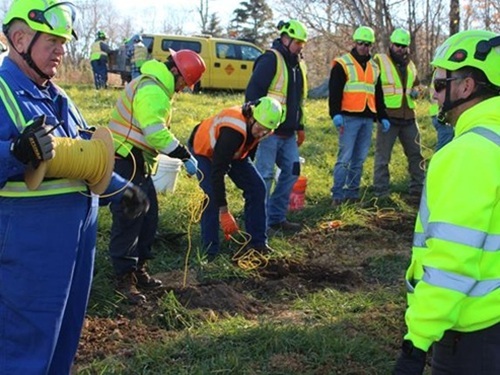The Texas Department of Transportation is planning to launch a new pilot program for laying hot mix asphalt next summer that will help streamline projects and improve the longevity and quality of state roads.
[Above photo by TxDOT]
For years, TxDOT has relied on contractors to conduct the seal coat process. However, via the new pilot program, TxDOT crews in some parts of the state will take over those seal coat responsibilities.
Training for the seal coat program will begin in a couple of months, with TxDOT workers operating in terms of three or four learning to operate the necessary machinery in the yard as well as the three-step sealcoat process to ensure road pavement lasts longer.
[Editor’s note: The Wyoming Department of Transportation video below provides insights into similar pavement preservation process, known as “chip sealing.”]
“The reason we are doing in-house seal coat now is, so we don’t lose the art of how it is done,” said Victor Songer, maintenance administrator for TxDOT’s Dallas District, in a blog post. “And it is a cost-efficient way to maintain the roadway.”
Other state departments of transportation are also involved in a variety of research projects in an effort to develop better materials for surface transportation infrastructure.
For example, the Montana Department of Transportation recently detailed in a video its work with Montana State University to develop a lower cost Ultra-High Performance Concrete or UHPC formula. After years of developing and thoroughly testing a new UHPC formula in the laboratory, the team put it to work when replacing two badly deteriorated concrete bridges in southwest Montana.
Meanwhile, in July, the Illinois Department of Transportation signed a six-year $48 million agreement with the University of Illinois Urbana-Champaign’s Illinois Center for Transportation to continue a longtime joint research program.
That agreement aims to help Illinois DOT solve key transportation challenges, such as creating safer and more sustainable infrastructure, reducing congestion, achieving more equitable transit systems, preparing for autonomous vehicles, and more.
At the top of the list of priorities is developing and implementing next-generation mobility technologies while ensuring a safe, resilient and net-zero emission transportation system by 2050, Illinois DOT said.
 States
States
NCDOT Staff Participate in ‘Explosive’ Technical Training
December 19, 2025 States
States

